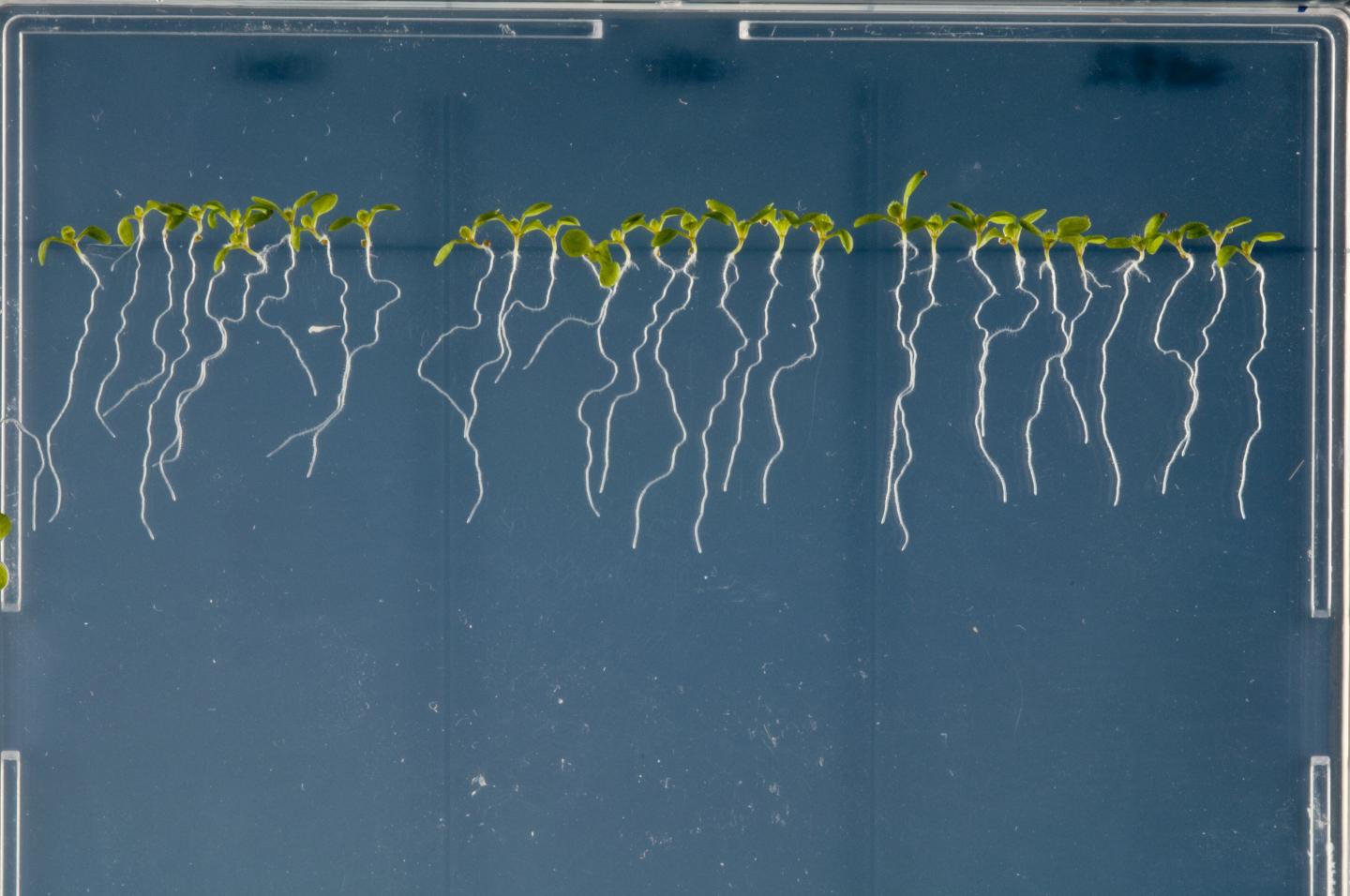
Credit: Phil Robinson
It’s been known for centuries that plants produce a diverse array of medically-valuable chemicals in their roots.
The benefits for human health are clear, but it’s been less apparent how and why plants expend 20 percent of their energy building these exotic chemicals. Is it for defence? Is it waste? What is it for?
A joint study from the John Innes Centre and the Chinese Academy of Sciences has shed new light on this fundamental question of plant specialised metabolism.
Appearing in the journal %0D%0A%09″ target=”_blank”>Science, the study reveals that plants use their root-derived chemicals to muster and maintain communities of microbes. It suggests that across the plant kingdom diverse plant chemistry may provide a basis for communication that enables the sculpting of microbial communities tailored to the specific needs of the host plant, be that a common weed or major crops such as rice or wheat.
The findings provide researchers with a gateway to engineering plant root microbiota in a range of major crops.
“This question has fascinated people for hundreds of years and we’ve found this chemistry enables plants to direct the assembly and maintenance of microbial communities in and around the roots,” says Professor Anne Osbourn of the John Innes Centre, a co-author of the study.
“We assume that the plant is shaping the root microbiota for its own benefit. If we can understand what the plant is doing and what kind of microbes are responding to it and what the benefits are then we may be able to use that knowledge to design improved crops or to engineer the root microbiome for enhanced productivity and sustainability and to move away from fertilizers and pesticides,” adds Professor Osbourn.
In this study the team uncovered a metabolic network expressed in the roots of the well-known model plant Arabidopsis thaliana. This network, organised primarily around gene clusters, can make over 50 previously undescribed molecules belonging to a diverse family of plant natural products called Triterpenes.
The researchers generated plants altered in the production of these root-derived chemicals and working with Professor Yang Bai of the Chinese Academy of Sciences grew these plants in natural soil from a farm in Beijing.
The results showed clear differences in the types of microbial communities that these plants assembled compared with the wild plants.
In further experiments the group synthesized many of these newly-discovered chemicals and tested their effect on communities of cultured microbes in a laboratory re-enactment of plant-microbial interactions in the soil.
“Using this approach, we can see that very small differences in chemical structures can have profound effects on whether a particular molecule will inhibit or promote the growth of a particular bacteria. Taken together we can clearly see that very subtle, selective modulation of microbes by this cocktail of chemicals,” says first author of the paper Dr Ancheng Huang.
Comparisons with root bacterial profiles in rice and wheat that do not make these Arabidopsis triterpenes demonstrated that these genetic networks were modulating bacteria towards the assembly of an Arabidopsis-specific root microbiota.
The next steps for the researchers is to explore further the benefits of this sculpting of the microbial community for the plant and observe other influences on plant chemistry such as nutrient limitation and pathogen challenge.
The full study: A specialized metabolic network selectively modulates Arabidopsis root microbiota, appears in Science.
###
Media Contact
Adrian Galvin
[email protected]
Related Journal Article
http://dx.



